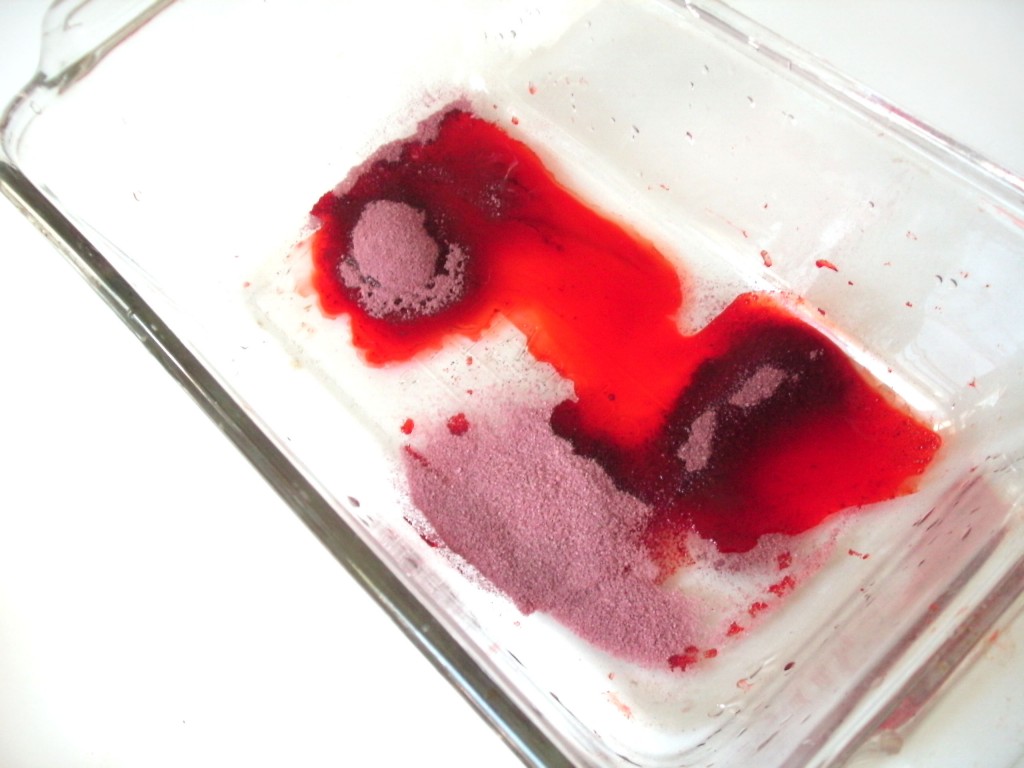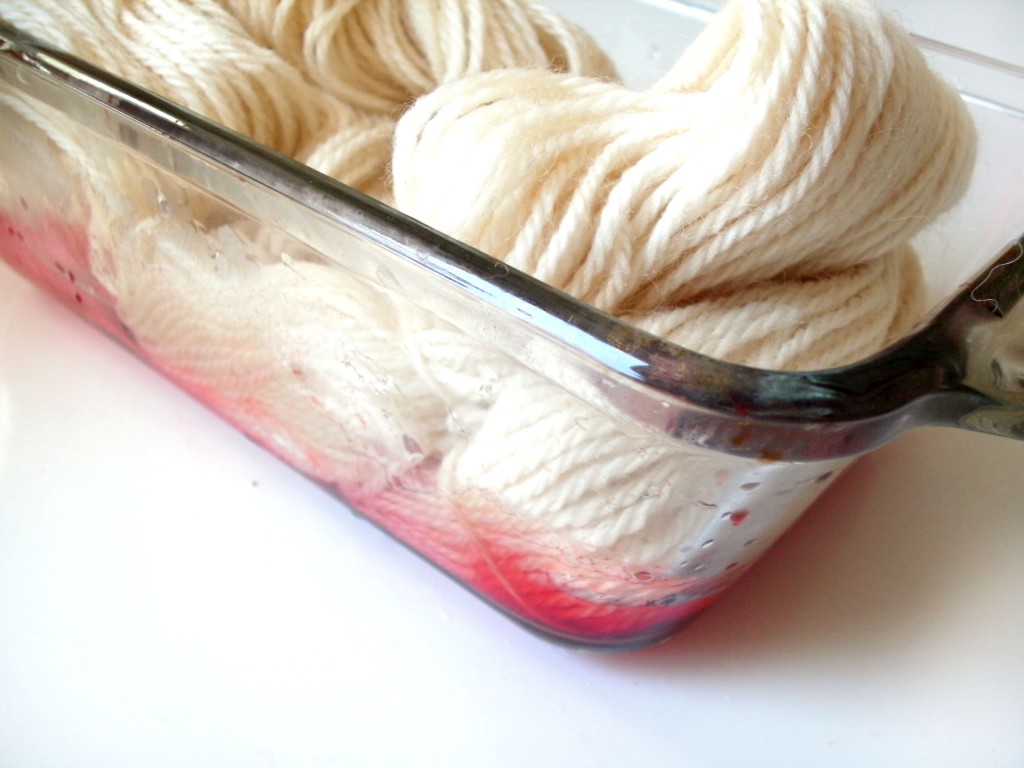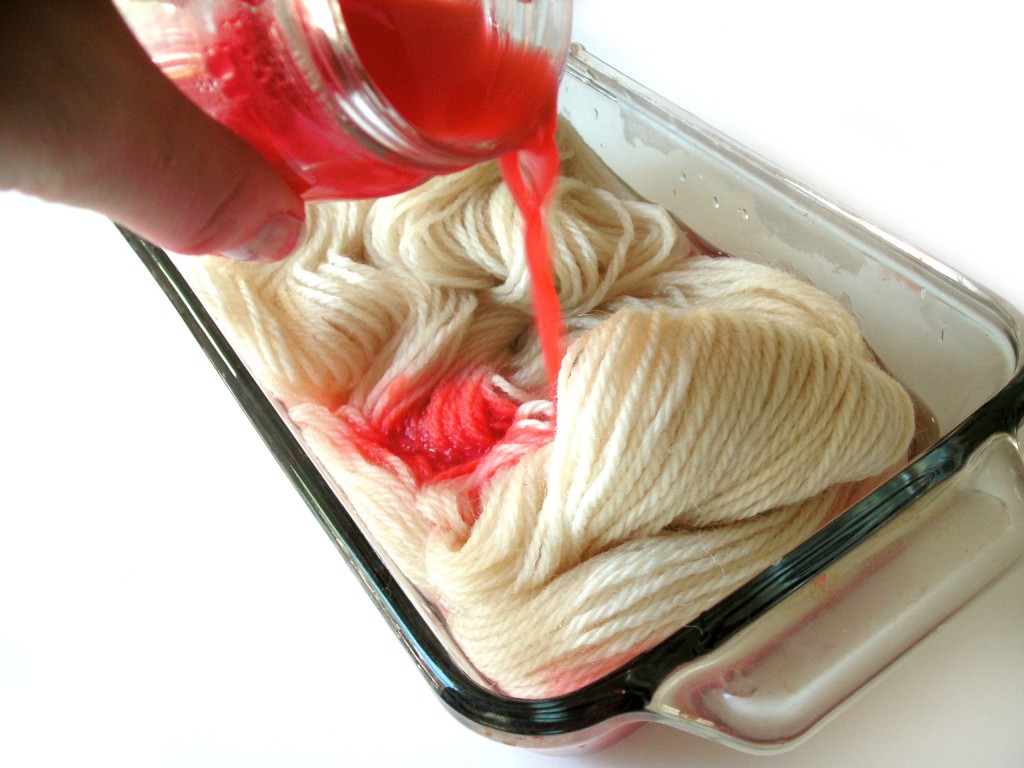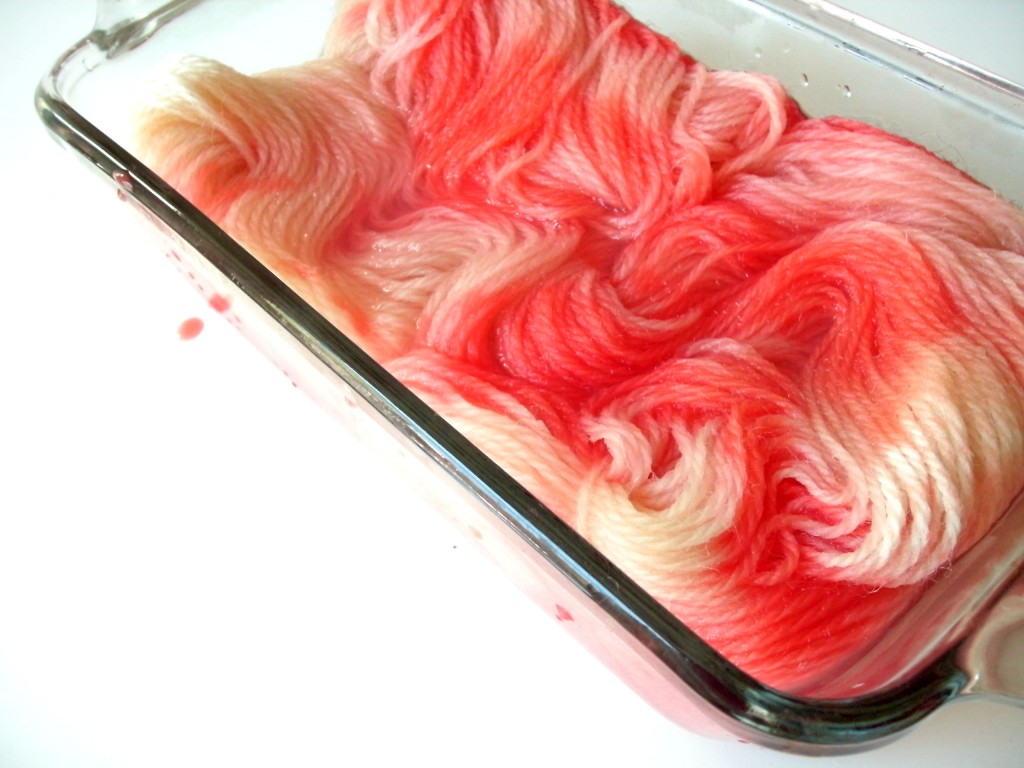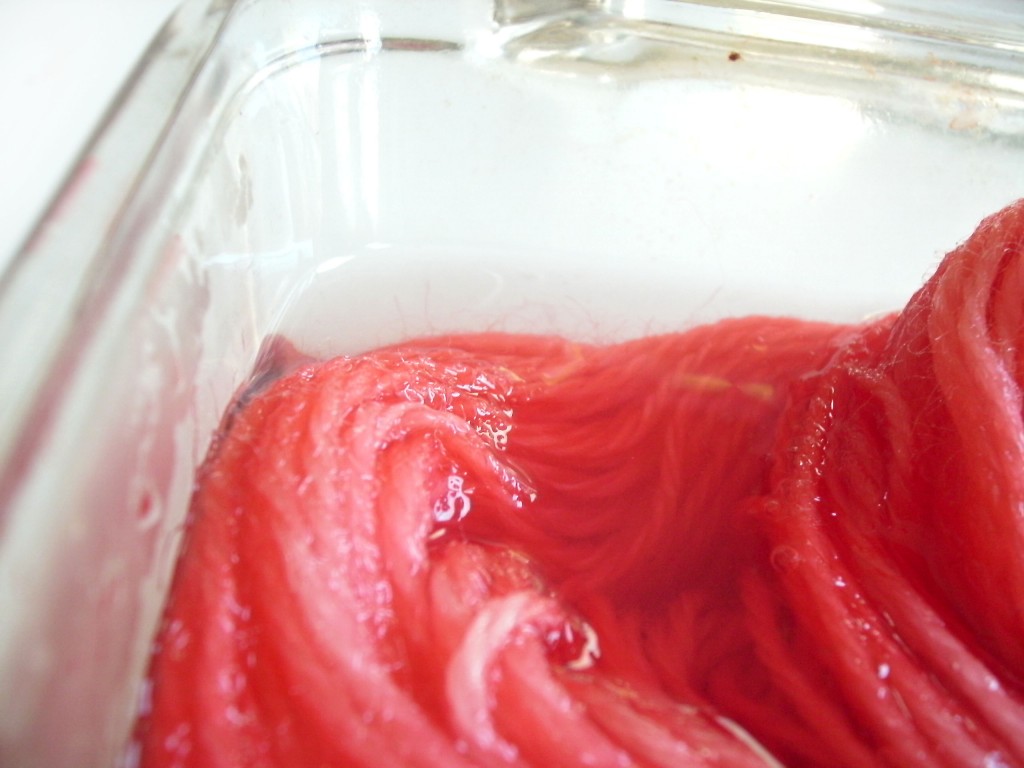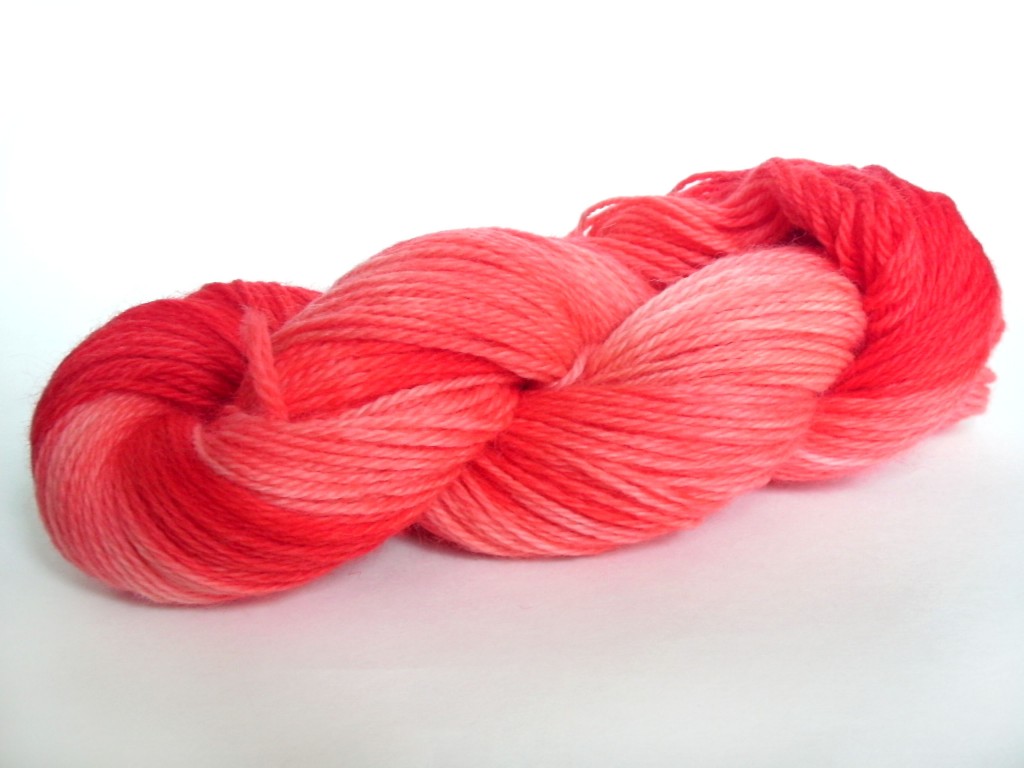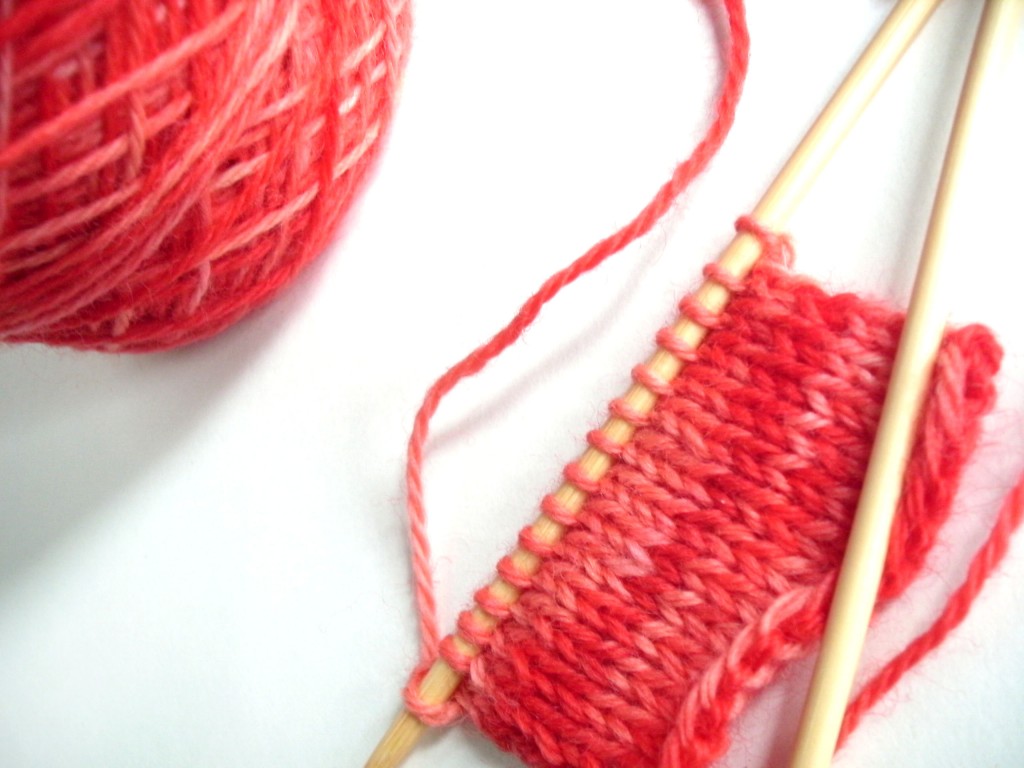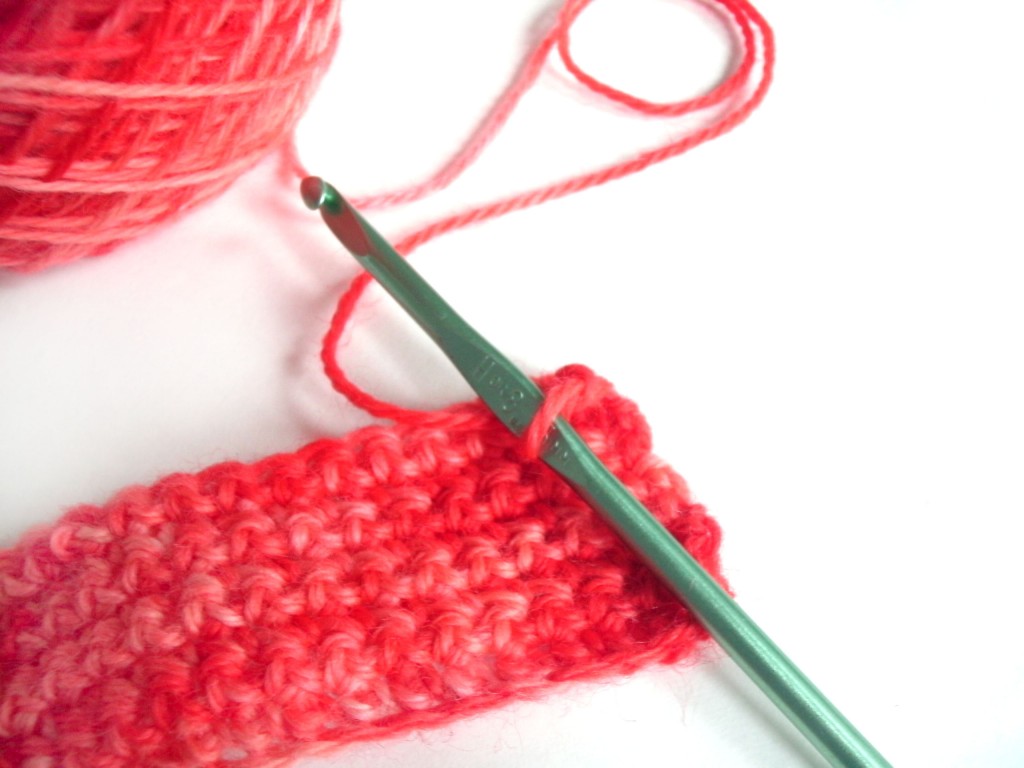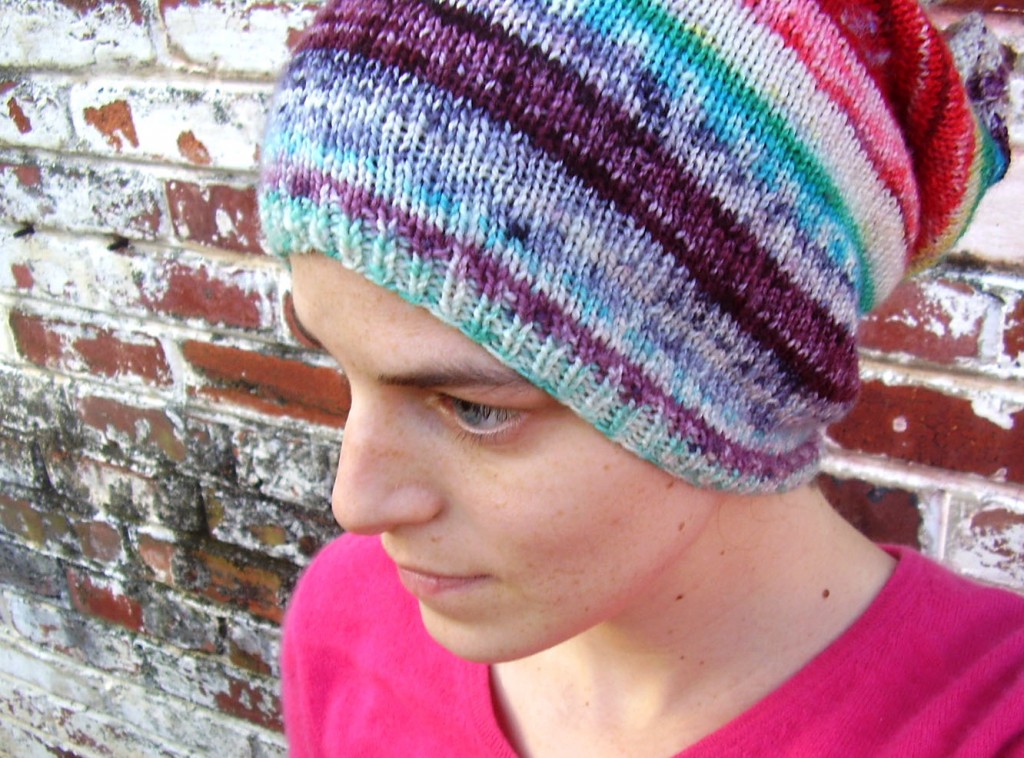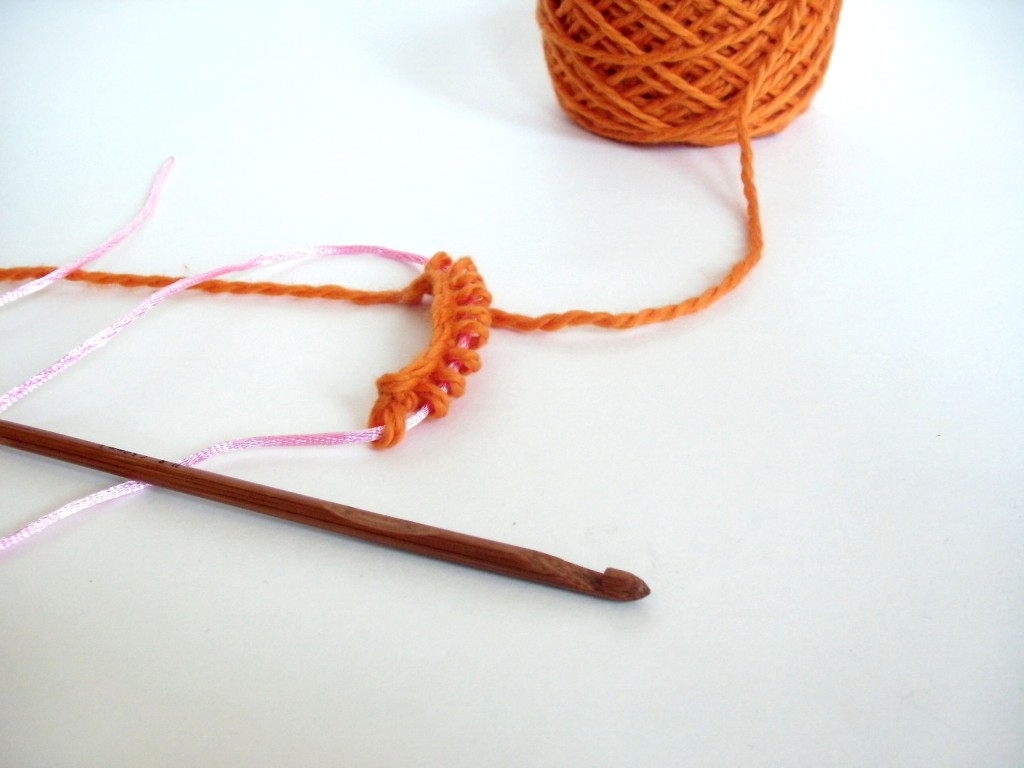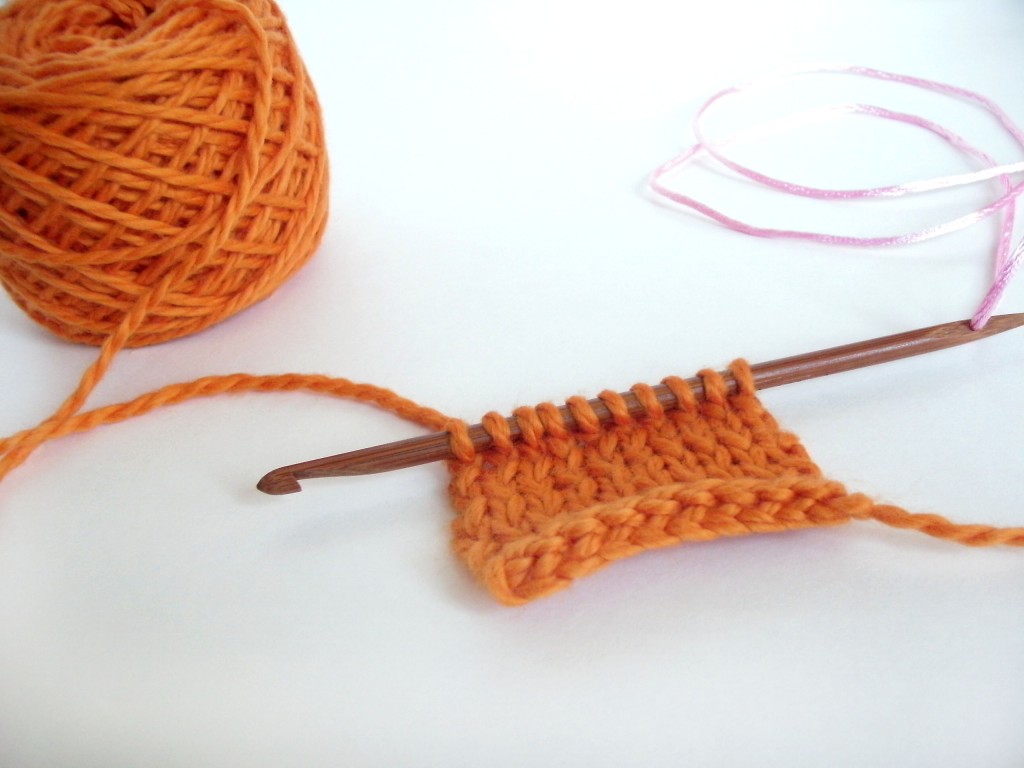Are you inspired to get dyeing with Kool-Aid? I hope so!
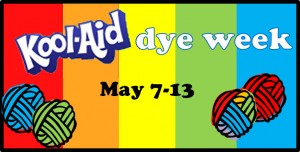
Today, I’m going to tell you about the basics of Kool-Aid Dyeing, and show you how to achieve a kettle-dyed look.
Kool-Aid Dyeing Basics
You’ll need:
- yarn made from natural animal-fibers (undyed is best)
- a few packets of Kool-Aid (see yesterday’s post about testing colors)
- a glass bowl or dish
- boiling water or water + a microwave
The Process
Dyeing with Kool-Aid is super-easy: just add your Kool-Aid packets to some boiling water and dunk your yarn in! Easy!
I’ll show you, step-by-step, how I use the basic technique to get a lovely kettle-dyed yarn. ‘Kettle-dyed’ is the name for a yarn that’s mostly one color, but has a range of tones gently changing throughout the yarn. It’s beautiful and easy, so give it a try!
Step 1: Add packets to your bowl
I’m going to dye my yarn red, so I’ve added a couple of red packets to my glass bowl. You can either use packets that are the same color, or use a couple that are close in color:
Step 2: Add water and yarn
Your yarn is going to suck up color like there’s no tomorrow… so don’t worry about messing up. I added a small amount of boiling water, and then plunked my yarn in:
The yarn that’s touching the Kool-Aid-dyed-water is going to start drinking up the color. Notice how I’ve left some of the yarn out? That’s because I want the yarn to absorb the color unevenly. That’s what gives you the kettle-dyed look!
Step 3: Add more color/water until you’re happy!
You can continue to add packets of color and water until the yarn is the color you’d like. Here, I decided to pour some (hot) Kool-Aid water on top of the yarn:
If you don’t want to use boiling water, you can also use regular water, and then microwave the water + yarn so that the color will set.
See how mine looks?
Some parts are darker, some parts are lighter. Perfect!
You’ll notice that the dye is sucked up into the yarn, and the remaining water will be clear:
Step 4: Rinse and dry!
That’s it! You don’t have to wait any length of time… once the color is in the yarn, it’s in.
Squeeze the water out of your yarn and allow to dry. You’ll end up with a beautiful skein!
Swatches
Isn’t it yummy? It’s a very subtle effect, and works up beautifully. I’ve made swatches in both knitting and crochet:
So lovely!
I hope you’ll give it a try and let me know how yours turns out!
Best,
Stacey





